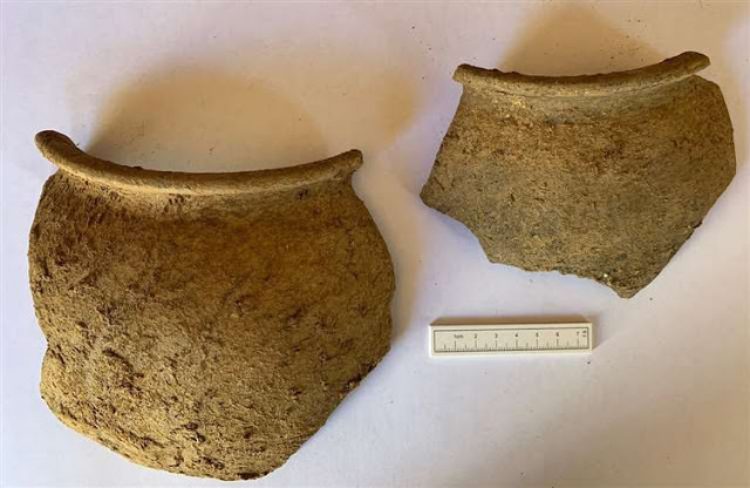The skeleton of the Anglo Saxon woman buried with lavish jewels

Remains of Anglo Saxon woman and jewels discovered at university campus in Canterbury
Archaeologists have discovered the remains of an Anglo-Saxon woman, buried with lavish jewels on the University’s Canterbury campus.
The Canterbury Archaeological Trust (CAT) has been working on site as the University gets ready to open its Science, Technology, Health, Engineering and Medicine facilities in 2020, with a £65m building on the North Holmes campus.

The woman, believed to have been in her twenties, was found buried with a silver, garnet-inlaid, Kentish disc brooch. Scientific testing on similar finds has shown the garnets are likely to have come from Sri Lanka rather than a nearer source. Such brooches, crafted in east Kent from exotic materials, were produced at the behest of the Kentish royal dynasty and distributed as gifts to those in their favour.
She was also wearing a necklace of amber and glass beads, a belt fastened with a copper alloy buckle, a copper alloy bracelet and was equipped with an iron knife. Together, the items found in the grave suggest that this young woman was buried between AD 580-600. She would have been a contemporary, and likely acquaintance, of the Kentish King Ethelbert and his Frankish Queen Bertha, whose modern statues can be seen nearby at Lady Wootton’s Green.
“The discovery of another ancient burial on our campus is extremely exciting,” she said. “It demonstrates the richness of the archaeology that surrounds us, and contributes important new evidence to our understanding of life and death in Canterbury around 1400 years ago.”
It is possible that the woman lived long enough to be an eyewitness to the arrival of St Augustine and his monks, who came to Canterbury in AD 597 on their mission to convert the English to Christianity. But her burial, found beside Old Sessions House, close to the present boundary with St Augustine’s Abbey, almost certainly took place before the construction of the first church at St Augustine’s in the early seventh century.
Dr Andrew Richardson, Outreach and Archives Manager at CAT, said: “This discovery is particularly significant, as it suggests that relatively high-status burial was taking place on the site in the years shortly before the establishment of the Abbey.
“One of the primary roles of the Abbey was as the burial place of Augustine and his companions, Archbishops and members of the Kentish royal dynasty. This find suggests that this may represent a continuance of existing practice at the site, rather than a completely new development and has implications for our interpretation of this World Heritage site.”
The woman’s bones will be retained for further scientific study, which it is hoped will provide further insights into her life, death and burial.
Source: Canterbury Christ Church University
